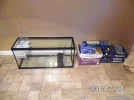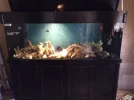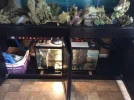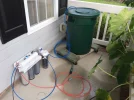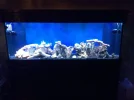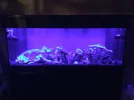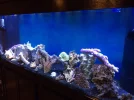usmarine_0369
Reefing newb
This is my first real Reef tank build, I moving out of a 65gl now but it is a simple setup with a hang on filtration system. I have not worked all the details out yet, nor have all the parts here to start the whole project. Tank, stand, canopy, salt, gravel, and sump pump with my 30gl sump are all I have here so far. I plan on ordering more equipment and planning more on the setup as time permits. I plan on setting an RODI system similar to a few fellow reefers I have followed on here. I'll be interested in feed back and some help along the way with building the sump and plumping it, and with adding other equipment like reactors in the sump plan as we'll.
150gl drilled (corner) reef ready, tank, stand, canopy.
JR Industries Black Birch
Glass tops.
100lbs of Carib Sea Live Aragonite Black Hawaiian
Marineland 400 watt heater
30gl Sump Basic setup
9.5 Pond Master Mag drive sump pump 950gph
Coralife Super Skimmer Model 125 ( transfer from old tank temporary)
RO/DI BRS 5 Stage with TDS 75gpd from bulk Reef Supply
American DJ PC 100/A rack mount power switcher (Amazon
(2) Hydor Koralia power heads 1500 and 1150gph
Dsuny® PROGRAMMABLE DIMMABLE LED AQUARIUM LIGHT for SPS/LPS TANK CORAL/REEF FISH
Wish List Upgrades Future plans
Hydor Koralia smart wave controller
Hydro Koralia wave maker photo cell day/night sensor
35gl Or 65gl Leg style water tank (TSC)
Fish
(1) Queen Angle (Queen Ann)
(1) Koran Angle (Blueberry)
(1) Diamond Goby (Emile)
(1) Green Star Leopard Wrassse (Grave Digger)
Invertebrates:
(3) Stomatella Snails (Hitch-hikers)
Common Names: Stomatella
Scientific Name: Stomatella varia
Description:Stomatella look like a cross between a slug and a snail. Their shell is fairly flat and inconspicuous compared to the shells of most snails. They are typically mottled brownish green in color, but can also be black, gray or other colors which is where their species name of varia comes from. They stay under about 3/4″ in length.
Due the shell shape, the body is always exposed to some degree and the Stomatella use the techniques of being mostly nocturnal as well as being fast (at least for a snail) to avoid predators. When they are out during the day, they tend to be very secretive. They also can break off the rear portion of their foot to distract an attacker while they make their getaway.
Since Stomatella are mostly nocturnal a look at the tank walls after dark with a flashlight will usually spot these critters if they are present in the tank.
Good or Bad?Stomatella are great additions to the reef tank. They are herbivores and feed upon micro algae in the reef tank much like any snail that you might go out to buy to do the same job and have the added benefit that they don’t move stuff around like regular snails can with their large shells and are more discrete if you don’t like a tank with a bunch of snails hanging on the glass.
Stomatella will reproduce in the reef tank, but don’t seem to reach nuisance population levels. Breeding has been observed during the daytime with all individuals climbing up to high points on the live rock and simultaneously releasing their eggs and sperm into the water. This can cause the tank water to look milky for a short time, but is nothing to worry about and will clear on its own. The filter feeders get to eat well when this occurs.
Unfortunately since they don’t have great shell protection, predatory animals in the tank such as hermit crabs, predatory shrimp and perhaps some fish can make a meal of them.
(1) Flame Crab - No info on (dealer called it this)
(3) Bum-bull Bee Snails
Care Level: Easy
Temperament: Peaceful
Water Conditions: 72-78° F, dKH 8-12, pH 8.1-8.4, sg 1.023-1.025
Max. Size: ½"
Color Form: Black, Yellow
Diet: Carnivore, Detritus
Origin: Marshall Islands
Family: Buccinidae
The Bumble Bee Snail is a distinctly small snail with yellowish bands on a dark brown background. It is a beneficial snail to have in the aquarium, and will do well if provided with ample hiding places and room to roam. It prefers an aquarium with live rock so that it can graze on uneaten meaty foods and detritus. It is also a sand sifter so prefers an aquarium with a deep sand bed in which to forage. It requires high water quality and is sensitive to high levels of copper-based medications and will not tolerate high nitrate levels. It is extremely difficult to breed in an aquarium, and has no distinguishing characteristics to help differentiate it from its mate.
(1) Red Leg Hermit Crab
Temperament: Community
Reef Safe: Yes
Family: Diogenidae
Native To: Caribbean
Diet: Omnivore
Adult Size: Up to 1.5"
Temperature: 72 - 78°F
Water Parameters: sg 1.020-1.026; pH 8.1-8.4; dKH 8-12
Care Level: Easy
Scientific Name: Paguristes cadenati
Environment: Marine
Excellent algae eater
(4) Giant Feather Duster
Care Level: Easy
Temperament: Peaceful
Reef Compatible: Yes
Waterflow: Medium
Water Conditions: 72-78° F, dKH 8-12, pH 8.1-8.4, sg 1.023-1.025
Max. Size: 7"
Color Form: Orange, Tan , Maroon,
Diet: Omnivore
Supplements: Calcium, Trace Elements
Compatibility: View Chart
Origin: Pacific Coast from Alaska to San Diego
Family: Sabellidae
The Feather Duster, also known as Giant Feather Duster, has a fan-shaped crown (radiole) that is tan or orange with brown band colorations. The radiole of some species from certain locales may be up to 7 inches in diameter, or of brighter colors. The Feather Duster uses the radiole to filter out small floating organisms, which it directs toward its mouth, located at the center of the crown. It protects its segmented body by secreting a parchment-like tube to cover itself. When it is disturbed, it can quickly pull in its radiole into the tube. If it is severely stressed, it will discard its crown, growing it back later. The Feather Duster is usually found in the coral rubble at the base of the reef aquarium, with some of the rubble being incorporated into its parchment-like tube. It needs to be housed in a well-established reef system as it is dependent upon plankton for its diet. It is very intolerant of copper-based medications. Supplemental feeding of phytoplankton and liquid organic foods should be provided.
(1 SM Frag) Mushroom Coral, Red
(1 SM Frag ) Mushroom Coral - Blue / Purple
(1 Sm Frag) Mushroom Coral - Striped Green
(1 SM Frag) Mushroom Polyp – Umbrella
Care Level: Moderate
Temperament: Semi-aggressive
Lighting: Moderate
Waterflow: Low to Medium
Placement: All
Water Conditions: 72-78° F, dKH 8-12, pH 8.1-8.4, sg 1.023-1.025
Color Form: Red
Supplements: Iodine, Trace Elements
Origin: Fiji, Indonesia, Maricultured - Bali, Singapore
Family: Actinodiscidae/Discosomatidae
The Actinodiscus Mushrooms are also referred to as Mushroom Anemones and Disc Anemones. They were previously in a genus called Discosoma. These invertebrates display a wide variety of colors, textures, and patterns. Some are solid colors, whereas, others are striped or spotted. The red specimens can vary from a light pinkish purple to a vivid red. The taxonomy of the various species is in a state of flux, and will probably continue to change. They are hardy and moderately easy to maintain. In general, they need a medium light level, and should be placed lower in the aquarium if the light intensity is high. The Actinodiscus Mushrooms prefer a low to medium water flow within the aquarium, although different species may have different requirements. They are semi-aggressive and require adequate space between themselves and other corals and sessile invertebrates. Each ships as several individual mushrooms attached to several small rocks which are glued to a single rock. An Actinodiscus Mushrooom receives some of its nutritional requirements through the photosynthesis of the symbiotic algae zooxanthellae which it hosts. It also feeds on other nutrients and particulate matter and benefits from additional food in the form of micro-plankton or brine shrimp fed to each polyp of the colony.It ships as several small chips of rock each containing one mushroom, glued to one larger rock. These mushrooms do require a few days after acclimation to fully open.
JR Industries Black Birch
Glass tops.
100lbs of Carib Sea Live Aragonite Black Hawaiian
Marineland 400 watt heater
30gl Sump Basic setup
9.5 Pond Master Mag drive sump pump 950gph
Coralife Super Skimmer Model 125 ( transfer from old tank temporary)
RO/DI BRS 5 Stage with TDS 75gpd from bulk Reef Supply
American DJ PC 100/A rack mount power switcher (Amazon
(2) Hydor Koralia power heads 1500 and 1150gph
Dsuny® PROGRAMMABLE DIMMABLE LED AQUARIUM LIGHT for SPS/LPS TANK CORAL/REEF FISH
Wish List Upgrades Future plans
Hydor Koralia smart wave controller
Hydro Koralia wave maker photo cell day/night sensor
35gl Or 65gl Leg style water tank (TSC)
Fish
(1) Queen Angle (Queen Ann)
(1) Koran Angle (Blueberry)
(1) Diamond Goby (Emile)
(1) Green Star Leopard Wrassse (Grave Digger)
Invertebrates:
(3) Stomatella Snails (Hitch-hikers)
Common Names: Stomatella
Scientific Name: Stomatella varia
Description:Stomatella look like a cross between a slug and a snail. Their shell is fairly flat and inconspicuous compared to the shells of most snails. They are typically mottled brownish green in color, but can also be black, gray or other colors which is where their species name of varia comes from. They stay under about 3/4″ in length.
Due the shell shape, the body is always exposed to some degree and the Stomatella use the techniques of being mostly nocturnal as well as being fast (at least for a snail) to avoid predators. When they are out during the day, they tend to be very secretive. They also can break off the rear portion of their foot to distract an attacker while they make their getaway.
Since Stomatella are mostly nocturnal a look at the tank walls after dark with a flashlight will usually spot these critters if they are present in the tank.
Good or Bad?Stomatella are great additions to the reef tank. They are herbivores and feed upon micro algae in the reef tank much like any snail that you might go out to buy to do the same job and have the added benefit that they don’t move stuff around like regular snails can with their large shells and are more discrete if you don’t like a tank with a bunch of snails hanging on the glass.
Stomatella will reproduce in the reef tank, but don’t seem to reach nuisance population levels. Breeding has been observed during the daytime with all individuals climbing up to high points on the live rock and simultaneously releasing their eggs and sperm into the water. This can cause the tank water to look milky for a short time, but is nothing to worry about and will clear on its own. The filter feeders get to eat well when this occurs.
Unfortunately since they don’t have great shell protection, predatory animals in the tank such as hermit crabs, predatory shrimp and perhaps some fish can make a meal of them.
(1) Flame Crab - No info on (dealer called it this)
(3) Bum-bull Bee Snails
Care Level: Easy
Temperament: Peaceful
Water Conditions: 72-78° F, dKH 8-12, pH 8.1-8.4, sg 1.023-1.025
Max. Size: ½"
Color Form: Black, Yellow
Diet: Carnivore, Detritus
Origin: Marshall Islands
Family: Buccinidae
The Bumble Bee Snail is a distinctly small snail with yellowish bands on a dark brown background. It is a beneficial snail to have in the aquarium, and will do well if provided with ample hiding places and room to roam. It prefers an aquarium with live rock so that it can graze on uneaten meaty foods and detritus. It is also a sand sifter so prefers an aquarium with a deep sand bed in which to forage. It requires high water quality and is sensitive to high levels of copper-based medications and will not tolerate high nitrate levels. It is extremely difficult to breed in an aquarium, and has no distinguishing characteristics to help differentiate it from its mate.
(1) Red Leg Hermit Crab
Temperament: Community
Reef Safe: Yes
Family: Diogenidae
Native To: Caribbean
Diet: Omnivore
Adult Size: Up to 1.5"
Temperature: 72 - 78°F
Water Parameters: sg 1.020-1.026; pH 8.1-8.4; dKH 8-12
Care Level: Easy
Scientific Name: Paguristes cadenati
Environment: Marine
Excellent algae eater
- Great scavenger
- Drip acclimation is highly recommended
(4) Giant Feather Duster
Care Level: Easy
Temperament: Peaceful
Reef Compatible: Yes
Waterflow: Medium
Water Conditions: 72-78° F, dKH 8-12, pH 8.1-8.4, sg 1.023-1.025
Max. Size: 7"
Color Form: Orange, Tan , Maroon,
Diet: Omnivore
Supplements: Calcium, Trace Elements
Compatibility: View Chart
Origin: Pacific Coast from Alaska to San Diego
Family: Sabellidae
The Feather Duster, also known as Giant Feather Duster, has a fan-shaped crown (radiole) that is tan or orange with brown band colorations. The radiole of some species from certain locales may be up to 7 inches in diameter, or of brighter colors. The Feather Duster uses the radiole to filter out small floating organisms, which it directs toward its mouth, located at the center of the crown. It protects its segmented body by secreting a parchment-like tube to cover itself. When it is disturbed, it can quickly pull in its radiole into the tube. If it is severely stressed, it will discard its crown, growing it back later. The Feather Duster is usually found in the coral rubble at the base of the reef aquarium, with some of the rubble being incorporated into its parchment-like tube. It needs to be housed in a well-established reef system as it is dependent upon plankton for its diet. It is very intolerant of copper-based medications. Supplemental feeding of phytoplankton and liquid organic foods should be provided.
(1 SM Frag) Mushroom Coral, Red
(1 SM Frag ) Mushroom Coral - Blue / Purple
(1 Sm Frag) Mushroom Coral - Striped Green
(1 SM Frag) Mushroom Polyp – Umbrella
Care Level: Moderate
Temperament: Semi-aggressive
Lighting: Moderate
Waterflow: Low to Medium
Placement: All
Water Conditions: 72-78° F, dKH 8-12, pH 8.1-8.4, sg 1.023-1.025
Color Form: Red
Supplements: Iodine, Trace Elements
Origin: Fiji, Indonesia, Maricultured - Bali, Singapore
Family: Actinodiscidae/Discosomatidae
The Actinodiscus Mushrooms are also referred to as Mushroom Anemones and Disc Anemones. They were previously in a genus called Discosoma. These invertebrates display a wide variety of colors, textures, and patterns. Some are solid colors, whereas, others are striped or spotted. The red specimens can vary from a light pinkish purple to a vivid red. The taxonomy of the various species is in a state of flux, and will probably continue to change. They are hardy and moderately easy to maintain. In general, they need a medium light level, and should be placed lower in the aquarium if the light intensity is high. The Actinodiscus Mushrooms prefer a low to medium water flow within the aquarium, although different species may have different requirements. They are semi-aggressive and require adequate space between themselves and other corals and sessile invertebrates. Each ships as several individual mushrooms attached to several small rocks which are glued to a single rock. An Actinodiscus Mushrooom receives some of its nutritional requirements through the photosynthesis of the symbiotic algae zooxanthellae which it hosts. It also feeds on other nutrients and particulate matter and benefits from additional food in the form of micro-plankton or brine shrimp fed to each polyp of the colony.It ships as several small chips of rock each containing one mushroom, glued to one larger rock. These mushrooms do require a few days after acclimation to fully open.
Attachments
-
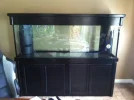 image.webp127.3 KB · Views: 472
image.webp127.3 KB · Views: 472 -
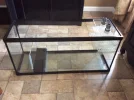 image.webp141.6 KB · Views: 341
image.webp141.6 KB · Views: 341 -
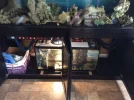 image.webp147.5 KB · Views: 319
image.webp147.5 KB · Views: 319 -
 image.webp131.5 KB · Views: 327
image.webp131.5 KB · Views: 327 -
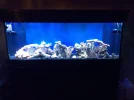 image.webp129.5 KB · Views: 376
image.webp129.5 KB · Views: 376 -
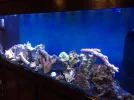 image.webp138.3 KB · Views: 326
image.webp138.3 KB · Views: 326 -
 image.webp242.3 KB · Views: 313
image.webp242.3 KB · Views: 313 -
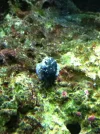 image.webp203.7 KB · Views: 297
image.webp203.7 KB · Views: 297 -
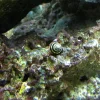 image.webp292.1 KB · Views: 323
image.webp292.1 KB · Views: 323 -
 image.webp216.9 KB · Views: 312
image.webp216.9 KB · Views: 312 -
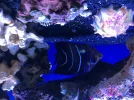 image.webp200.8 KB · Views: 322
image.webp200.8 KB · Views: 322
Last edited by a moderator:


